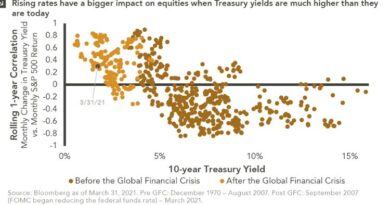The US Dollar Index: Unraveling The Global Currency Benchmark
Introduction:
The US Dollar Index (USDX), also known as DXY, is a widely recognized measure of the value of the United States dollar relative to a basket of foreign currencies. Established in 1973, this benchmark has become a vital tool for investors, economists, and policymakers to gauge the dollar’s performance and assess its impact on global markets. In this article, we will explore the significance of the US Dollar Index, its calculation methodology, its role in the global economy, and its implications for various stakeholders.
Body:
I. Understanding The US Dollar Index:
The US Dollar Index is a geometrically weighted average of six major currencies: the euro (EUR), Japanese yen (JPY), British pound (GBP), Canadian dollar (CAD), Swedish krona (SEK), and Swiss franc (CHF). These currencies are carefully selected to represent key trading partners and major economies worldwide. The index is calculated using a formula that assigns specific weights to each currency, with the euro being the most heavily weighted.
II. Calculation Methodology:
The US Dollar Index is calculated using a formula that accounts for exchange rates and the relative importance of each currency in international trade. The formula employs a base year (currently 1973) as a reference point, assigning a value of 100.00 to the index at that time. Movements in the index reflect changes in the dollar’s value against the basket of currencies over time.
III. Role In The Global Economy:
- Benchmark for the Dollar: The US Dollar Index serves as a benchmark for the dollar’s value, allowing investors to assess its strength or weakness relative to other major currencies. This information helps them make informed decisions about international investments, trade, and hedging strategies.
- International Trade: The USDX plays a significant role in international trade by influencing exchange rates. A stronger dollar, as reflected in the index, makes imports cheaper for US consumers but can make US exports more expensive and less competitive globally.
- Reserve Currency Status: The US dollar holds the position of the world’s primary reserve currency. Central banks around the globe hold substantial dollar reserves, and the US Dollar Index provides a measure of the currency’s stability and purchasing power. Fluctuations in the index can impact global financial stability and investor confidence.
IV. Implications For Stakeholders:
- Investors and Traders: The US Dollar Index is closely monitored by currency traders and investors engaged in foreign exchange markets. It helps them identify trends, assess risk, and make informed trading decisions.
- Multinational Corporations: Companies with global operations and cross-border transactions closely follow the USDX. Changes in the index can affect their profitability, competitiveness, and the cost of doing business in foreign markets.
- Policy Makers and Economists: Governments and central banks rely on the US Dollar Index to assess the impact of currency fluctuations on their domestic economies. It helps guide monetary policy decisions, including interest rates, currency interventions, and trade policies.
Conclusion:
The US Dollar Index plays a pivotal role in the global financial landscape, providing a vital benchmark for the value of the US dollar against a basket of major currencies. Its calculation methodology, role in the global economy, and implications for stakeholders make it an essential tool for understanding and analyzing currency movements. As global markets continue to evolve, the USDX will remain a cornerstone for investors, economists, and policymakers seeking to navigate the complexities of the international financial system.
FAQs:
Q1: How often is the US Dollar Index updated? The US Dollar Index is updated in real-time, reflecting the constantly changing exchange rates between the US dollar and the currencies in its basket. The index value is available throughout trading hours and can be accessed through various financial platforms and news sources.
Q2: Can the US Dollar Index predict future currency movements? While the US Dollar Index provides insights into the dollar’s performance relative to other major currencies, it should not be solely relied upon to predict future currency movements. The index is just one of many indicators used by analysts and investors to assess market conditions and make informed decisions. Factors such as economic data, geopolitical events, and central bank policies also influence currency movements.



